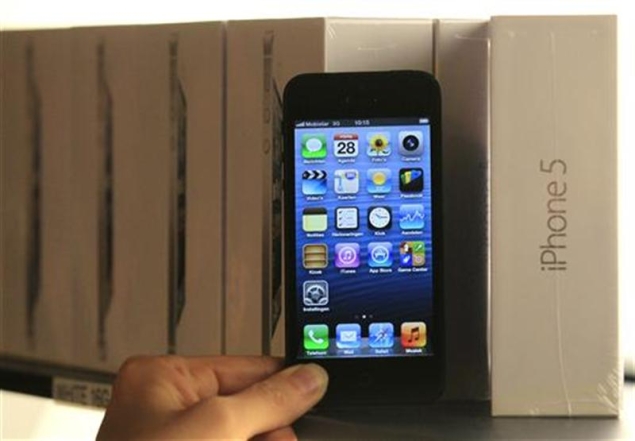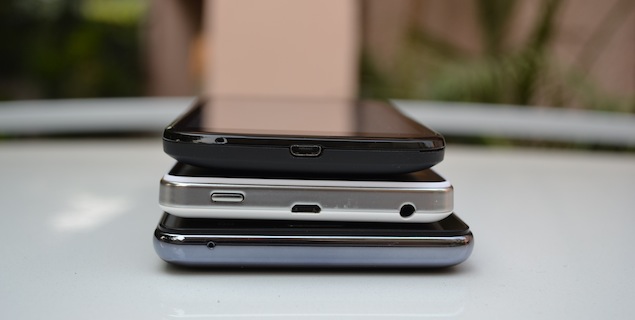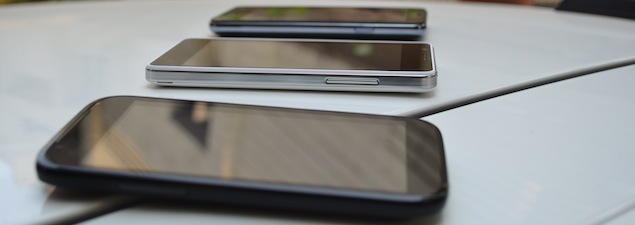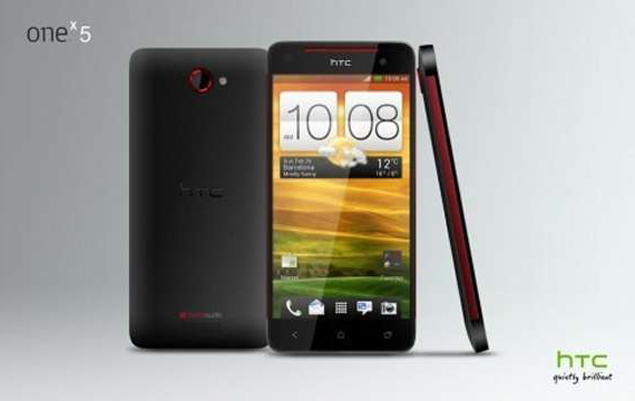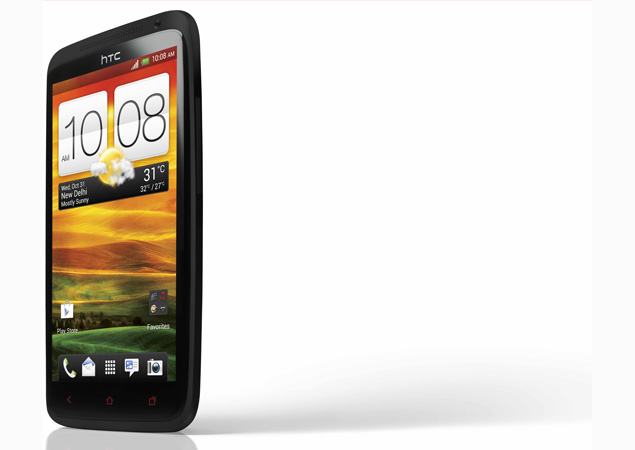I've
been conditioned just like any other consumer to expect certain things
from certain companies. When it comes to tablets, I expect Apple's to
look and feel amazing, Google's to seamlessly blend online services such
as Gmail and search, and Amazon's to have easy access to its online
store.
So when Microsoft came out with its first tablet computer,
the Surface, I wanted and expected a machine that is good for work.
After all, its Windows operating system runs most of the world's
computers, particularly in corporate environments.
The Surface is
Microsoft's first attempt at a general-purpose computer. In the past,
it made the software and left it to other companies to make the
machines. But to catch the tablet wave led by Apple's iPad, Microsoft
felt it needed to make its own device.
The Surface's price tag
starts at $499, the same as the latest full-screen iPad, but if you are
going to buy one, you'll want to spend the extra $100 or more for an
optional cover that comes with a working keyboard.
After several
days with it, I felt that Surface comes close to becoming a replacement
for my work computer, but it doesn't make it all the way. Some elements
designed for "play" make Surface surprisingly good, while others verge
on being frustrating.
InterfaceThere's no doubt that
Surface has a split personality, steeped in its very physical design.
It's a tablet, but transforms into a personal computer with the keyboard
cover, snapped on using its magnetic spine.
Trying hard to be
both means compromises. For instance, a kickstand lets you prop up the
screen on a flat surface so that it feels more like a laptop with the
keyboard attached, but the setup is clumsy for typing on your lap. On
the other hand, you can flip the keyboard cover upside down and use the
kickstand to form a supportive triangle for the screen. In this
position, the device is a comfy companion while watching TV on the
couch.
A big aspect of the split personality comes in the
software. Surface's start screen has a bunch of square tiles that
represent apps - akin to the round icons on iPhones, iPads and Android
devices. One touch, and an app opens full screen. But there's also a
tile that takes you to a very different operating system called the
desktop. Presumably, this is where the "work" begins.
Because the
desktop interface takes on the old Windows style of boxes and icons,
your suddenly big-seeming fingers become less well-suited to navigating.
I had to give up on touch and use the keyboard cover with its trackpad
(The pricier Type Cover with real keys is far easier for typing than the
soft, flat Touch Cover, by the way). Swiping around on the cover's
built-in trackpad quickly brings up the mouse pointer, whose precision
you'll both need and appreciate in the desktop world.
WorkThe
Surface that went on sale Oct. 26 comes with Windows RT, the
slimmed-down version of Microsoft's newest operating system, Windows 8.
While I understand the need for a slimmer OS to run on low-power chips
that extend battery life, RT makes the device clearly not a PC.
Although
the device has Microsoft's latest browser, Internet Explorer 10,
third-party plug-ins that have helped power the Web for years don't work
correctly. I couldn't get behind my company's firewall because a
Juniper Networks plug-in couldn't be installed. IE 10 is meant to be
plug-in free, but the Web hasn't caught up to it yet. Devices with the
full version of Windows 8 won't have the same plug-in problem, Microsoft
says. But a Surface with Windows 8 Pro isn't due out for a few months.
Surface
gives you free copies of the Office programs Word, Excel, PowerPoint,
and OneNote, which is a big bonus. The RT versions of Office operate
much like the full versions, but lack some meaningful conveniences such
as the ability to email files as attachments with a couple of clicks.
Microsoft says that's because Outlook isn't included in the package.
Instead, Surface uses a program called Windows Mail, but it makes little
sense to me why it can't be integrated with Office.
Still, in my
testing I was able to save and access Word and OneNote documents on
Microsoft's Internet-storage system, SkyDrive. As a result, I could
access those files back on my office computer without the hassles of USB
and other storage drives.
PlayPart of the "play"
element of Surface should have been the joy of just getting around using
the touch screen, but some things made it confusing.
At first, I didn't have a problem with the need to swipe in from the edges to make certain options appear.
Swiping
in from the right brings up several buttons including ones for
searching, changing settings or returning to the start screen. When you
first set up the device, an explanatory graphic pops up to walk you
through it. You hold the device with both hands and the screen
lengthwise, and you do the swiping with your thumbs. This is very
different from the idea of holding the tablet with one hand and touching
it with the other, which Apple's iPad seems to favor.
Swiping
down from the top lets you either discard an app completely (by swiping
through the bottom of the screen) or create a split screen for
multitasking (by pushing the app to the left or right until it snaps in
place). Swiping up from the bottom brings up app-specific options.
The
problem is swiping in from the left. When you do so, it takes you back
to the previous app you had open. I was impressed with how snappy the
tablet was flipping between programs.
But I got confused
sometimes with websites. I wanted to go back a page, not leave the app
completely. The difference between these two functions is swiping in
from beyond the edge or swiping in from just near it. I often found
myself in places in applications without knowing how to return easily.
Also,
if you swipe back through apps quickly, you can zip past the one you
want, but you can't swipe forward to return to it. As a stopgap, you can
swipe in slightly and then back out of the left side to get a list of
previous apps. But this is not really intuitive and you have to be
careful to touch the one you want when the list comes up.
This painstaking learning takes some of the fun out of having a tablet and makes it maddening to use at times.
Another quirkThe
standard font was quite small, forcing me to hunch close to the screen
to get a good look. You can scale up the size of everything in the
desktop world, but not elsewhere. A function called Magnifier helps make
small parts of the screen bigger, but at low resolution. And certain
apps let you spread and pinch with your fingers to zoom in and out, but
other apps don't. The lack of consistency makes the touch interface less
enjoyable.
One other niggling complaint: Even though the screen
size should make for perfect widescreen viewing in the 16:9 aspect ratio
common for widescreen television, some Netflix movies with wider ratios
continued to be shown with big black bars on top and bottom of the
screen, wasting valuable screen space.
One big thing Microsoft
got right was music. Xbox Music gives you a really clean interface, with
beautiful moving graphics, and a "Smart DJ" feature, which plays entire
songs in rotation in a genre - much like Pandora. You can also play
songs or albums from a catalog of millions; it's free, with ads. In rare
cases, you may get only 30-second previews because of licensing
reasons, but those songs are also available for purchase from the app.
I
liked how Xbox Music plays in the background. When you toggle the
physical volume rocker, a little box with pause, forward and back
buttons pops up in a corner and fades away quickly. That works with
whatever happens to be using the speakers, including iHeart Radio. It
allowed me to easily catch up on the morning's news and my email inbox
at the same time.
Smart Glass, a feature that allows the Surface
and other Windows devices to interact with the Xbox, was interesting but
at times confusing. For instance, when I tried swiping through a menu
of available videos, games and Xbox apps, I swiped right to left, but
the menu on my TV screen went left to right. Same with up and down.
Microsoft
says this configuration was intentional based on user research. But for
me, it gave the impression that this was not, as CEO Steve Ballmer
promised, a delightful product "right out of the box."
ConclusionThe
software is far from flawless, but I'm hopeful it will get better over
time as apps are developed and software bugs are discovered and fixed.
What's
important is that Microsoft got the hardware right - creating a light
portable computer that has an ample number of fun features and a decent
work environment. That combination could make Surface as addicting and
as useful for extending the work day as the BlackBerry once was.
About the SurfaceThe
Surface costs $499 for a version with 32 gigabytes, though about half
of it gets taken up by the operating system and pre-loaded software. A
Touch Cover costs an extra $100 when purchased with the tablet (It's
$120 separately). A Type Cover - with real keys - goes for $130.
For $699, you get the 64 GB version with a Touch Cover included.
The Surface is available only at Microsoft's stores and website.


